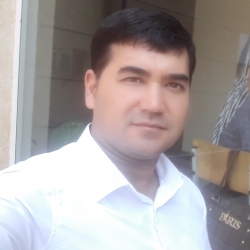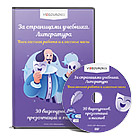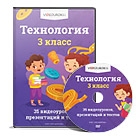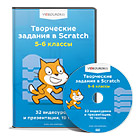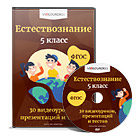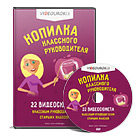To give students of higher education music education an idea of the "historical stages of development of Uzbek folklore and folklore."
Annotation: In order to restore the national values of the people, examples of folklore, beautiful traditions, the head of our state pays special attention to the rich folklore formed over the centuries, the holidays of kindness and love. the need to focus has been emphasized since the early days of independence.
In this article, the author explains his methodology to students of higher education in the field of music education to form in their minds an accurate picture of the "historical stages of development of Uzbek folklore and folklore."
Keywords: Independence, folklore, kindness, love, holidays, festivals, art monuments, oriental thinking, formation of pride, perfection, our ancestors, historical, cultural.
Introduction. In-depth study and analysis of all historical, cultural, literary, artistic monuments and folklore created by our ancestors in the short period since independence, the universal and national ideas in them serve the Uzbek people. , the formation and development of oriental thinking, pride has been a constant focus.
Independence As the first President of Uzbekistan said, thanks to independence, “it is practically possible to raise the Republic in all respects, taking into account the age-old way of life, traditions, customs, skills, incomparable natural resources of the people, based on its national interests. 'lib remained.
In order to restore the national values of the people, examples of folklore, beautiful traditions, the head of state stressed the need to pay attention to the rich folklore formed over many centuries, the holidays of kindness and love. from the earliest days of independence.
Independence has allowed the people to develop their oral poetic creativity, to record, publish and analyze the spiritual and cultural heritage created by the people in the same class, non-partisan, realistic way. The people's oral tradition of our President, the values of the people's national wisdom have been called a unique code of ethics. “Our ancient ancestors developed a whole set of moral requirements for a perfect man, in modern language, the Eastern Code of Ethics. In the heart of man, there must be an uncompromising rebellion against filth, impurity, and injustice, ”he said.
Therefore, the issues of spiritual education in the higher education system of Uzbekistan are focused on today's principles, and the values of folklore, which are the source of folk wisdom in the education of the perfect man, are the most important spiritual wealth.
Folklore is one of the oldest and most ancient branches of the art of word art.
Although there are different opinions in folklore about the meaning of the term "folk art" and the meaning of this concept, the specific nature and leading features of folk art are not fully revealed. The increase of human experience in the process of labor, the development of consciousness, the desire to express ideas about nature and society in figurative terms, led to the emergence of the form of oral creation.
Folk art is the art of hardworking people. An integral part of folk art is the art of speech, which differs from other types of folk art (music, theater, dance, fine and applied arts, etc.). He passed from word of mouth, from generation to generation, from generation to generation, found in the performance of talented representatives of the people, and organized the Uzbek folk poetry.
However, it did not remain as it was originally created, but was creatively reworked, changed, enriched with new information, adapted to historical conditions, and at the same time had a positive impact on the written literature. .
Folk oral poetry - the art of oral expression is called "folklore" or "folklore".
Folklore has been viewed at different times and in different countries as part of ethnography, anthropology, musicology and even sociology.
The term "folklore" was first used in 1846 by nineteenth-century explorer William Thoms. "Folk" means "people", "lor" means "knowledge", "wisdom", "wisdom", which means "knowledge of the people", "wisdom of the people", "wisdom of the people". The term "folklore" has become an international term and is used in many countries.
In the United Kingdom and the United States, all forms of folk art — poetic creation, music, dance, play, theater, fine and applied arts, as well as myths, beliefs, and customs — are referred to by this term. called
The term "folklore" was introduced in Uzbek folklore in 1932 by Hodir Zarif, who called his first book for university students "Uzbek folklore." Prior to that, the term "folklore" was replaced by terms such as "folk literature", "oral literature", and "oral literature in Uzbeks". The term "folklore" has been replaced by the term "folklore".
In Uzbek folklore, "folklore" is mainly understood as folk poetry. Other forms of folk art, such as music, use the term "folk music."
We can say that folklore is a syncretic art, because the works of folklore combine elements of music, dance and theater. At the same time, folklore differs from other types of art in its peculiarities. In folklore, the unity of words, melodies and performances is always preserved. That is why the study of folk art is called folklore studies. The foundations of folklore go back to the aesthetic thinking of the ancient world. Written and oral relics of ancient world travelers and historians about legends and myths, various customs and rituals are important for folklore. The first experiments in the writing of folklore began in the 11th century.
Folklore works reflect the life of a working people. It embodies the socio-historical, political, philosophical, artistic and aesthetic views of the people about the world. This shows the deep popularism of the content and idea of folklore. The basis of popularism in folklore is its progressive (growing) nature. Historical and social events in folklore from the point of view of the relations of the people.
Folklore has its own characteristics: oral, popular, traditional, group performance, variability.
The rich and colorful folklore heritage of the Uzbek people is closely linked to its ethnic composition, diversity and historical development, mainly between the two rivers of Central Asia. This is because the region between the Amudarya and the Syrdarya has long served as a crossroads in the great migration of peoples and their rise in various political, cultural and economic relations. Suffice it to say that only the Great Silk Road crossed this region almost completely. In turn, it is natural that the process of economic, political and cultural development took place wherever trade routes passed.
The fact that the history of Central Asia, including the ethnoses and the state that emerged between the two rivers, plays an important role in the history and development of the whole world is also determined by the fact that the region is located in all favorable conditions.
The Uzbek people are made up of three major ethnic groups, and as a result of the unification of the Qarluq, Kipchak, and Oghuz tribes, the core of today's Uzbek people has emerged.
It is known that these three tribal associations played an important role in the formation and formation of the Turkic peoples in other regions. These processes are also evident in the oral poetry of the people. We see originality in the folklore of the peoples of Central Asia, in the construction of the plot, in the leading motives. In addition, folklore works are distinguished by their social value. It is also important in educating the next generation in terms of enlightenment, ideology and aesthetics.
The Uzbek folk art is the product of a team that has been created over the centuries and passed from mouth to mouth, from generation to generation, from teacher to student. Because folklore works are created and performed by a team, not by one person, but on the basis of the creative experience of an entire team. Some folklore works are created by talented people and tell about the customs, beliefs, dreams and relationships of their tribes and clans with nature. These works, which were liked by the members of the tribe and clan, were passed on by word of mouth and became the work of the community. The works are thus perfected among the community and become the property of the people. Folk singers (narrators, storytellers, singers, latifaguys, askiyas) take a creative approach to the works created by the ensemble, without performing them literally. That is why the works he performs are always recognized as "people's".
No matter how talented the individual artist was, he followed the traditions of collective creativity and tried to adapt to the life of the people, the tastes and demands of the people.
Folk poetry dates back to before the advent of writing. Its creation and spread among people is connected with a living oral tradition. Oral features distinguish it from other forms of folk art, such as music, dance, and ganch-carving. The oral creation and oral performance of folklore over the centuries has had an impact on its form and content.
Some of the most ancient oral relics of the peoples of Central Asia have survived to the present day. These sources include history books, scholarly works, written monuments, and more. The books of ancient historians Herodotus, Ctesias, Polyene, Xares Mitilensky, and others tell the story of some of the works of folklore. The works of medieval historians Hamza Isfahani, Tabari, Masudi, Beruni, and others also contain valuable materials and information on oral literature. Written monuments such as the Avesto, Behustun, Bundakhishi, and Denkard contain some examples of oral literature. Mahmud Kashgari, in his famous linguistic Devonu lugotit turk, gives a variety of examples from ancient hymns, lyrical poems and proverbs.
It is known that some historical facts are not fully remembered, forgotten as a result of time, and often fall out of their works, change, confuse and interpret. Therefore, historical events and happenings are not exactly reflected in folklore. Sometimes the poetic passages contained in epics can be forgotten, turning these genres into fairy tales or, conversely, turning fairy tales into epics. such events in folklore do not diminish its ideological, artistic and aesthetic value.
Tradition is a product of teamwork. It has its own historical sources. The earliest examples of folklore were created in primitive society. For this reason, the oral creation and oral performance of folklore works, which emerged as a reflection of the plot of folklore works, primitive living conditions, customs and worldviews in the motifs of emblems, gave rise to their unchanging stable forms - tradition. For example, fairy tales and epics of the heroic type have a traditional form, although there is a certain difference in genres. In both (both fairy tales and epics), the composition consists of a traditional beginning, plot statement, and completion. The protagonist and the events are described in exaggeration. The text is relatively stable. The main plots, symbols and means of artistic expression in folklore become a tradition, and in part change from mouth to mouth, from generation to generation, some details are added, but the main source is tradition. remains.
As a result of historical development, some works may change their original form. Folklore works are not only traditional, but also creative. Every time something is sung and performed, something changes, something is added. But all of these changes are part of a deep and strong tradition. Tradition is one of the main criteria for the survival and spread of folklore as a verbal art in live oral performance.
Changes in the transition of folklore works from period to period, from performance to performance are reflected in the variants. In many cases, the distribution of folklore works in multiple copies is a variant. Variants are diverse texts of a particular work that do not contradict each other and can live independently in a living and oral tradition. For example, about 30 versions of the epic "Alpomish" were written, but there are more versions among the people. Options arise mainly as a result of living conditions. The narrator makes changes to the epic or fairy tale depending on the time, circumstances, and audience in which the narrator is performing. For example, a fairy tale told to adults is told differently to children. That way, the story changes. Finally, fairy tale options emerge. This means that the time of creation and living conditions of each folklore work are very complex. It will be related to the social and economic environment, the audience, the creative and performing skills. Variability determines the scope, popularity, and populism of folk art.
The term folklore is derived from the English words folk-folk and lore-wisdom, which means folk wisdom, wisdom, craftsmanship, art. The ancients expressed their views orally when they did not know how to write. That's where their oral art came from. It is a word art with its own characteristics, and all its examples live only in the process of live performance. Therefore, while the combination of words and melodies is predominant, in some it is the performance of the performing arts. Folklore includes all forms of art. Many examples of folklore are performed in a combination of words and melodies. It is traditional to sing epics and songs to the accompaniment of a drum, while songs are sung to the accompaniment of a dutar and a doira, and to the accompaniment of a choir ensemble. In other works of folklore, the word takes the lead. The genres of fairy tale, legend, narration, loaf, narration, anecdote, riddle and proverb have such a character.
Folklore is the national oral art of a tribe, clan, people, or nation that reflects the ideology and psychology of that tribe, clan, people, nation, or nation. It contains various genres of reality, such as epics, fairy tales, proverbs, songs, riddles. Folk art works arise and live in a long-term creative process, from word of mouth, from generation to generation, from teacher to student, the exact author of which is unknown. It is worth noting that the art of folk music originated in ancient times as a mass creation of the ensemble, the first examples of which were intended for group performance. in those days, soloists were no different from collective performers. But over time, as performance skills improved, solo performers began to emerge from the group.
Bibliography:
1. Imamov K. Uzbek folk oral poetic creativity T :. - "Teacher" 1990.
2. Mallaev N. History of Uzbek literature. T:. - "Teacher" 1976.
3. Mirzaev. T, Sarimsoqov. B. "Oral poetry of the Uzbek people". T:. - "Teacher" 1990;
4. Nasriddinov K. Uzbek funerals. T:. -1976.
5. Razzokov H. Oral poetry of the Uzbek people. T:. - "Teacher" 1998.




